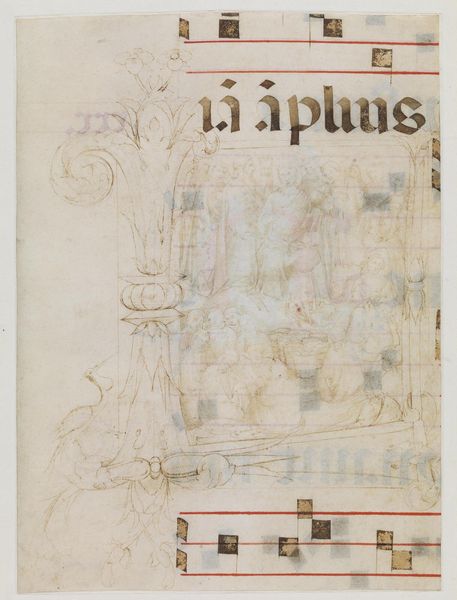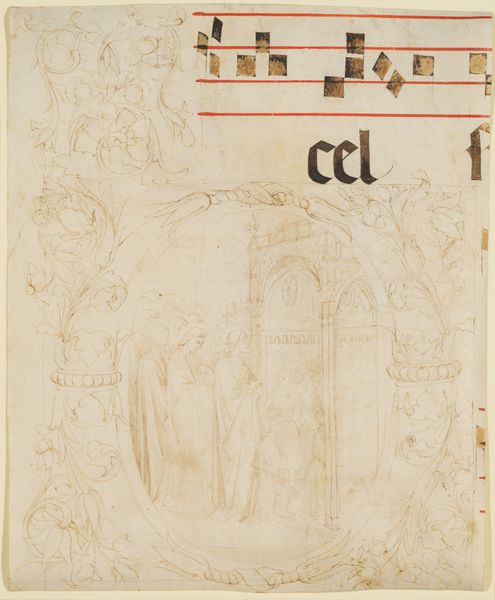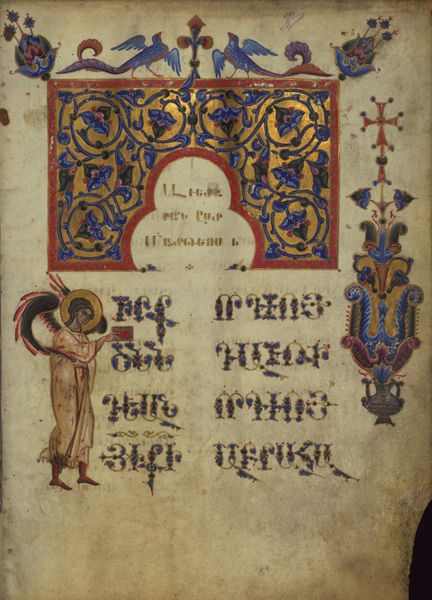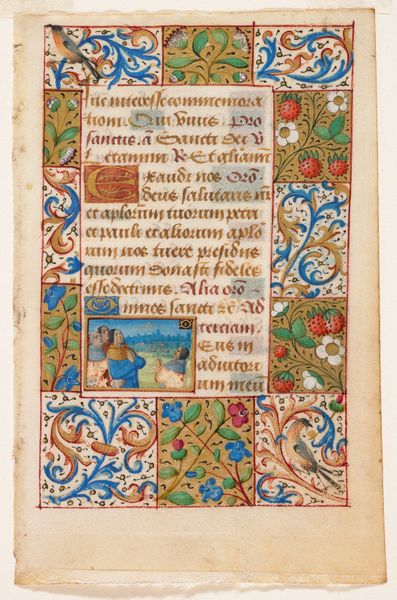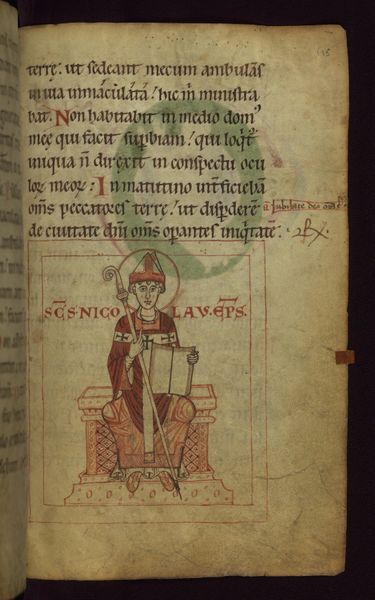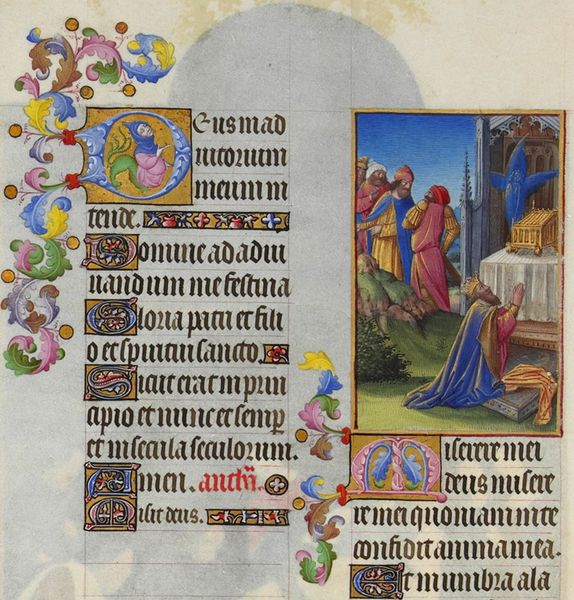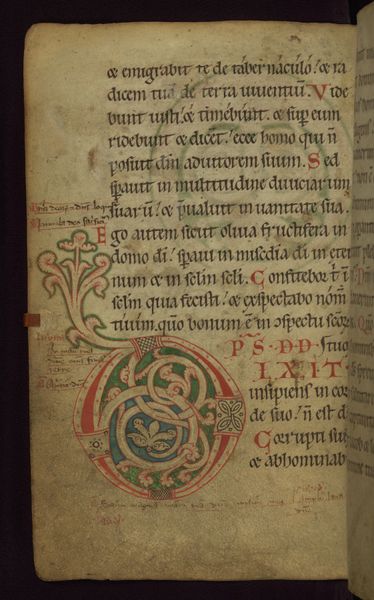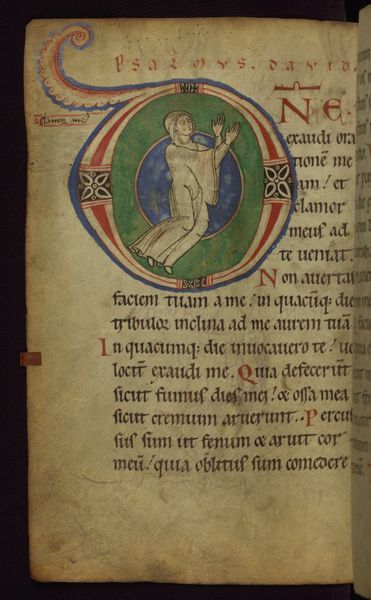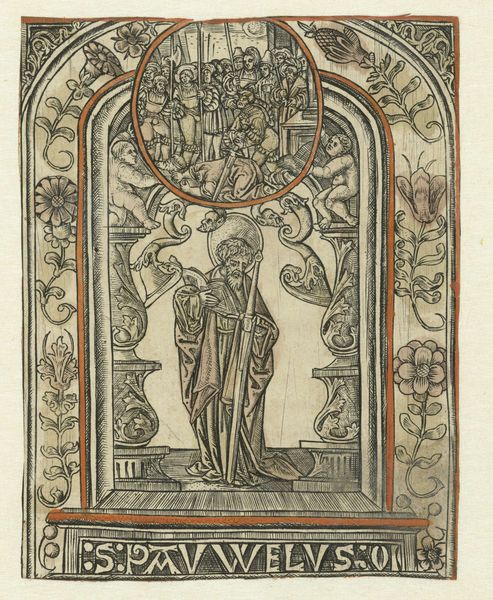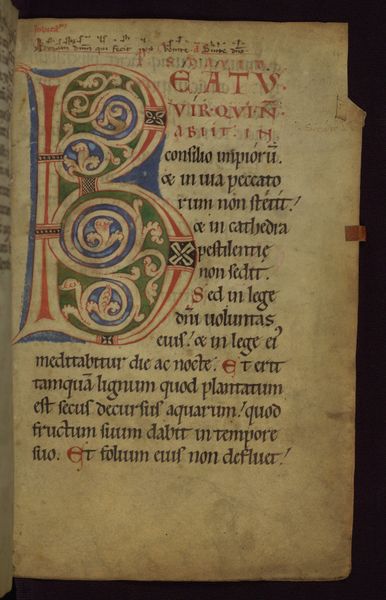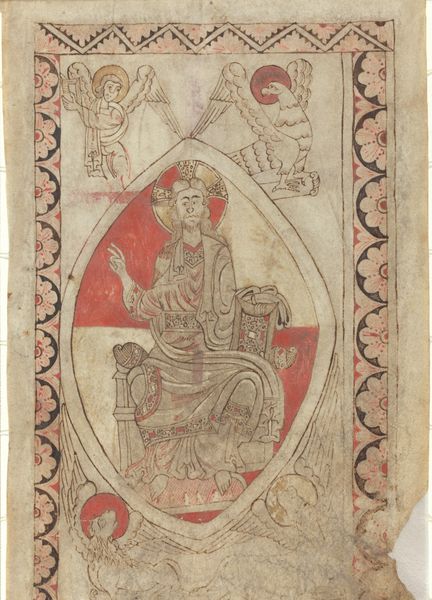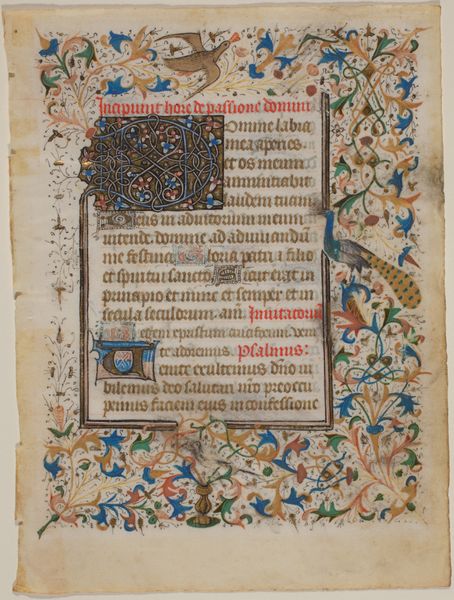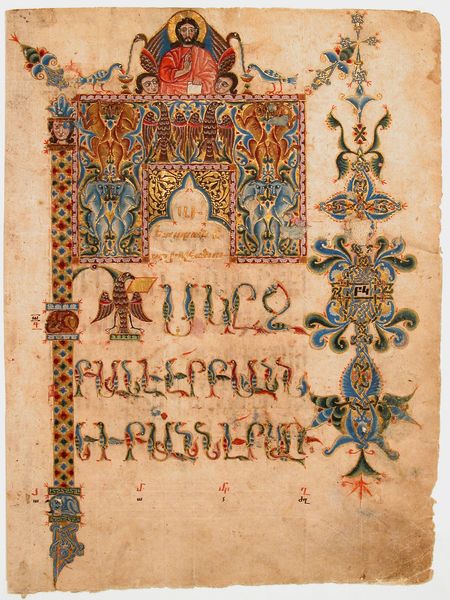
Christ washing the feet of the Apostles in an initial D, fragments of text, and musical staves 1370 - 1423
0:00
0:00
drawing, tempera, paper, ink
#
drawing
#
medieval
#
narrative-art
#
tempera
#
figuration
#
paper
#
ink
#
italian-renaissance
Dimensions: 296 mm (height) x 235 mm (width) (bladmaal)
Editor: So, here we have "Christ washing the feet of the Apostles in an initial D" created between 1370 and 1423, attributed to Lorenzo Monaco. It's a tempera, ink, and paper drawing. I'm immediately struck by the intimacy conveyed in such a small, contained space, framed within that ornate letter D. What's your read on this, given its context? Curator: This piece speaks volumes about the function of art within religious life during the late Medieval and early Renaissance periods. Consider that it likely formed part of a larger illuminated manuscript, probably a choir book given the presence of musical notation, so art served liturgical purposes. The image visually reinforces the biblical narrative. The choice of the Washing of the Feet specifically illustrates themes of humility and service. Monaco's delicate rendering and the very act of including it in such a document highlight the institutional power of the Church to interpret and disseminate its message. Who would have been able to see this and where? Editor: Right, access would have been incredibly limited. It seems like a concentrated dose of doctrine meant for the eyes of select religious figures. But what about the very deliberate artistic choices? For instance, the artist has framed it within this ornate ‘D’; it's almost theatrical. Is there any relevance? Curator: Absolutely. That ornate "D," along with the floral flourishes and the musical notation surrounding it, visually elevate the scene. This wasn't just an illustration; it was an event. It mirrors the way the Church staged rituals and employed imagery to convey a sense of awe and the sacred. The artistry in rendering even such a 'small' detail of this book conveys the grandeur with which religious ideas permeated visual culture and societal life. Editor: That makes so much sense. The 'theatricality' underscores the performative aspect of religion in this time, with the Church acting as both producer and director, dictating what should be seen, felt, and believed. Curator: Precisely. And think about how the museum acquires, displays, and interprets a fragment like this centuries later, inevitably shaping its meaning for contemporary audiences too. Editor: I never thought about how art acts as a political stage beyond its creation. This puts into perspective how both societal conditions, as well as its situation and audience, impact an artwork! Thanks for shedding light.
Comments
No comments
Be the first to comment and join the conversation on the ultimate creative platform.
